During the middle 1960s, the affordable full-size car was king of Detroit. Chevrolet alone moved well past a million Biscaynes, Bel Airs and Impalas every year then, while Ford wasn’t far behind in sales from its line of big, comfortable rides. In 1966, the full-sized Ford line in the United States had the stripped-down Custom and Custom 500 at the bottom, with the Galaxie 500 a step higher and the snazzy LTD sitting at the very top of the big Ford pyramid. The Galaxie 500 was the biggest seller of the four, with sales about evenly split between the rakish two-door fastback and the sensible four-door post sedan. Here’s one of those sedans, spied recently in a self-service yard just south of Denver.
This family-owned yard has an off-limits-to-public storage lot next door to the pull-parts-yourself area, full of interesting old cars. To make room for more interesting stuff, they sometimes auction off excess inventory from their private-reserve area (which often get purchased by other junkyards and put in their parts inventories). Other times, they’ll just move some of the special cars into the regular parts-yanking yard. A good dozen of them just appeared there, including the Mustang II and Mercury Montego MX Brougham you see flanking today’s Junkyard Gem in the above photo, plus a 1959 Studebaker Lark VIII, a 1965 Chevy Biscayne with six-cylinder and three-on-the-tree manual, a big-block ’71 Impala coupe and some other cars I’ll share later.
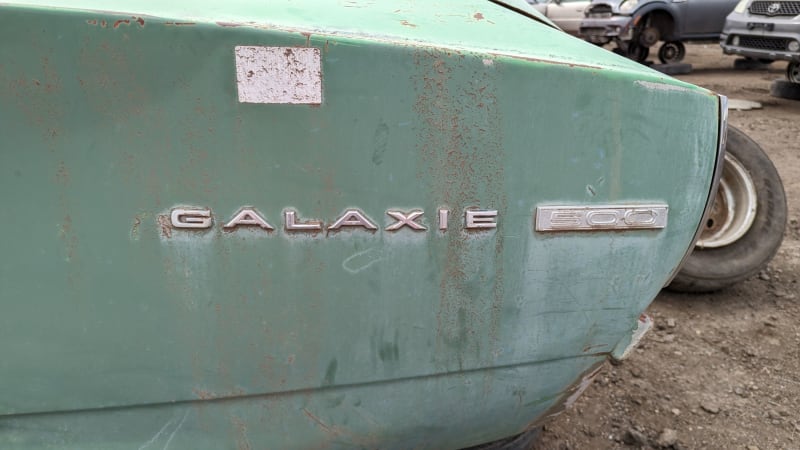
List price on this car started at $2,784, which amounts to something like $26,425 in 2023 dollars. This particular example is packed with costly options, as you’ll see, so its out-the-door price was likely a lot higher.

First of all, there’s this 352-cubic-inch (5.8-liter) big-block “Interceptor” V8 engine, rated at 250 horsepower. This engine is a member of the fabled FE family, which included the better-known 390, 427 and 428 engines that went into the wilder Mustangs and muscle cars.
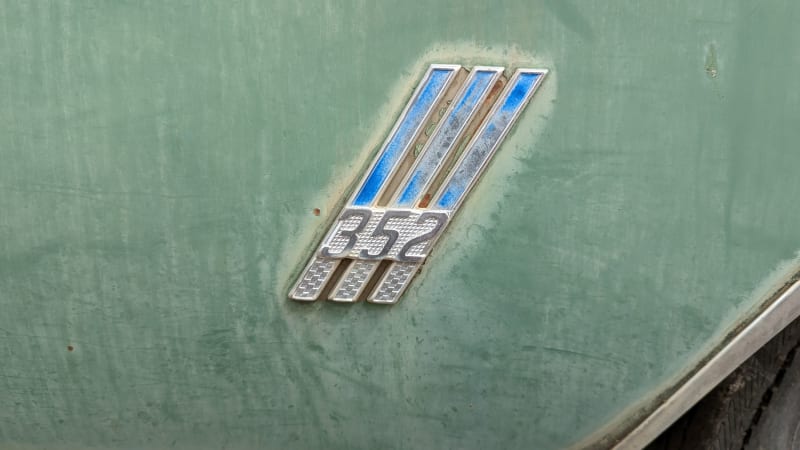
The 352 had been around since 1958 and was last used in 1967 F-Series trucks. Yes, I bought this emblem for my garage wall.
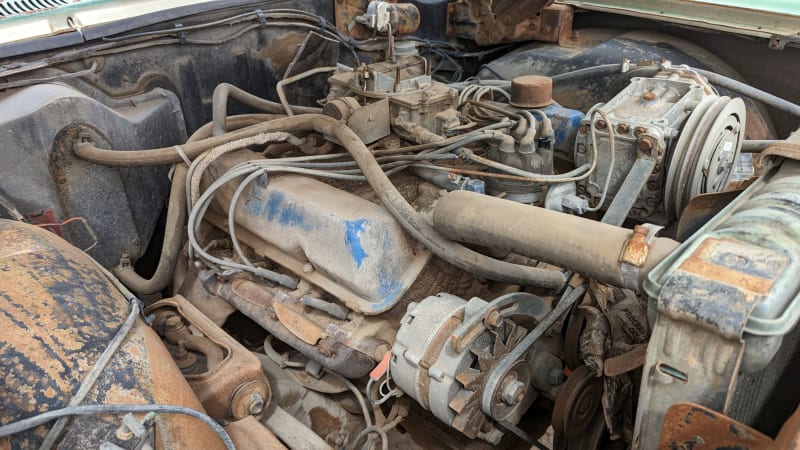
The base engine in all but the ritziest 1966 full-size Fords was a 240-cubic-inch straight-six rated at 140 horsepower, but Dearborn had you well covered if you wanted to pay for more power that year. There were V8s of 289, 390, 427 and 428 cubic inches available, with power ratings going all the way up to 425 horsepower (that twin-four-barrel 427 Cobra had insane-for-the-time 11.1:1 compression and a drag-race-grade lumpy cam and proved to be a stalling, overheating nightmare in ordinary stop-and-go driving).
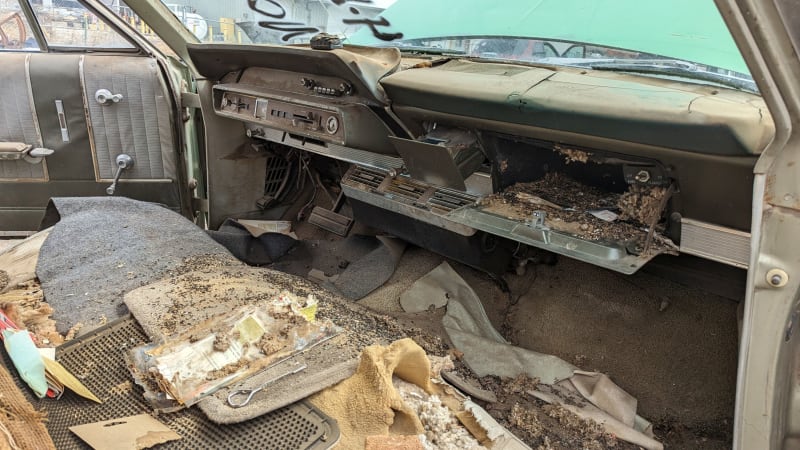
This car has the optional three-speed automatic transmission as well, which added $184 to the cost ($1,746 today). The base transmission in the lower trim levels of Galaxie 500 (e.g. this car) was a traditional three-speed column-shift manual. To get a four-on-the-floor manual transmission in a ’66 Galaxie, you had to buy the 315-horse 390 or better with it (though in reality, a friendly dealer probably could have arranged a special order with any engine/transmission combination Ford made).

Factory air conditioning cost $353 extra ($3,351 after inflation), but this car appears to have been fitted with a Montgomery Ward Riverside “Supreme” A/C unit.

The build tag tells us that this car was assembled on April Fool’s Day of 1966 at the Los Angeles Assembly plant in Pico Rivera, then sold through the Denver sales office. The color is Medium Sage Gold Metallic and the interior is Gold. Interestingly, Northrop bought Los Angeles Assembly in 1982 and (in secret) used it for the development of the B-2 Spirit stealth bomber; today, the site is a shopping mall.
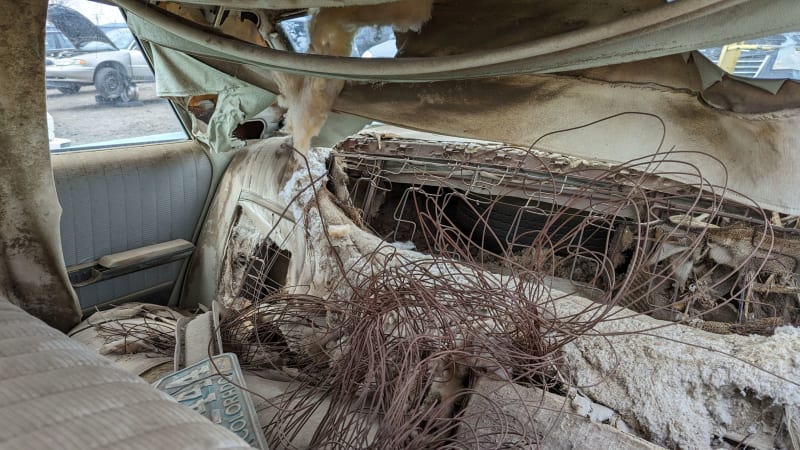
It appears to have spent at least a couple of decades sitting outside in the High Plains elements. The interior is ruined, while the body is banged up but not hopelessly rusty.
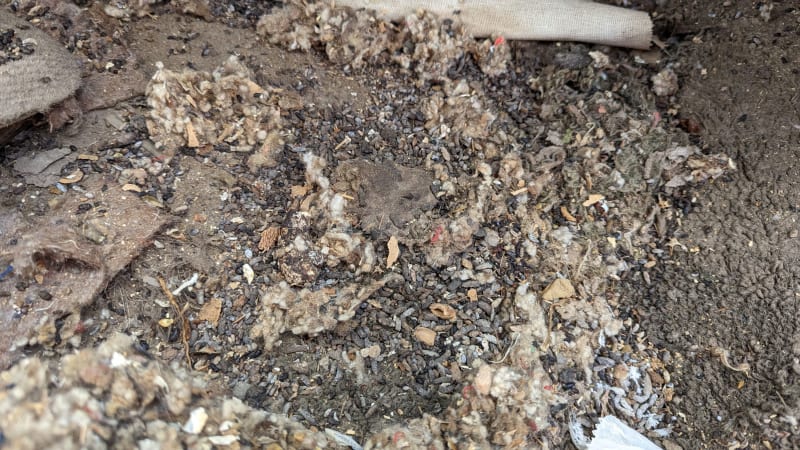
The problem with cars sitting outdoors for years around here is that rodents move in and proceed to chew the upholstery into nesting material and then deposit inches-thick layers of their hantavirus-hazard poop. I’ve seen much worse, but this car is nasty inside.
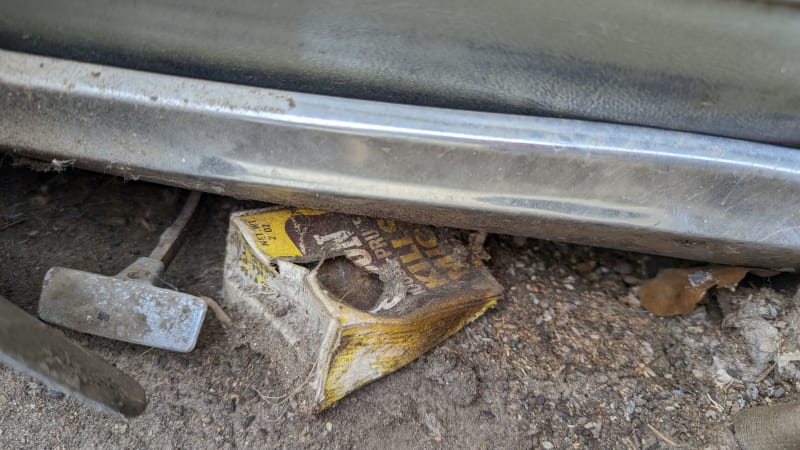
The rat poison didn’t last long.
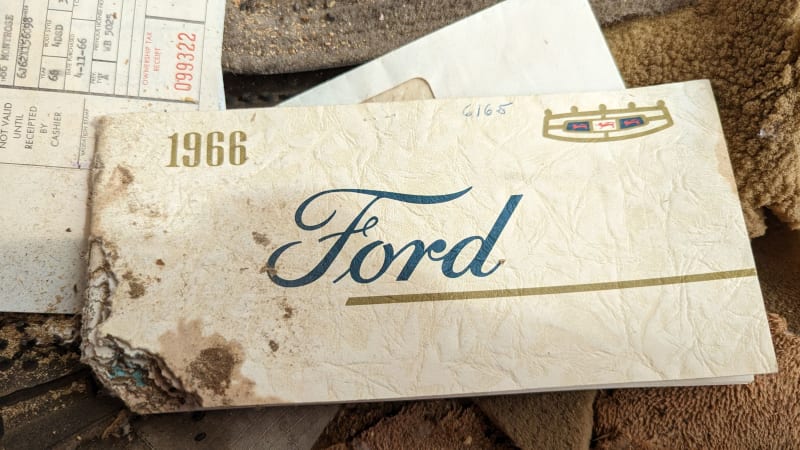
The critters even chewed on the original owner’s manual.
